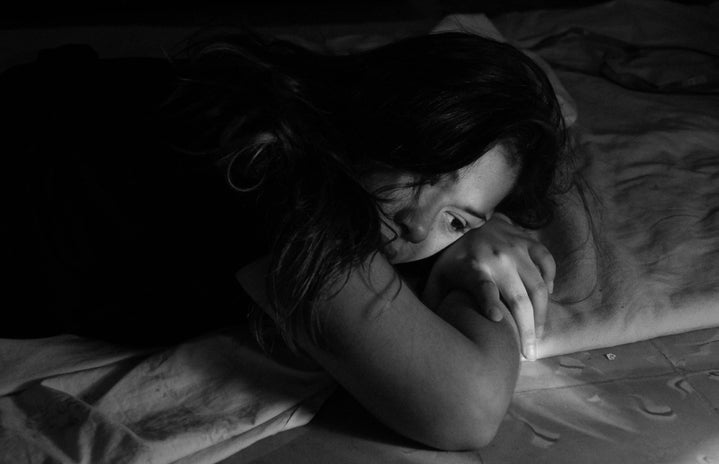When did sadness become appealing? The answer, in all honesty, is long ago—much before you and I were even born. In his paper The Cultural Origins Western Depression, Sushrut Jadhavtalks about a time when depression, previously melancholia, in its mild form became desirable and fashionable. He says “(…) its status as a disease of the genteel class was based on the idea that it was an attribute of superior minds, of genius”. Similar to this period when ‘melancholia’ became desirable and fashionable, mental illness has long been romanticised on social media, particularly in the era of 2014 Tumblr.
People’s knowledge and attitudes are greatly influenced by media (movies, social media, music etc.); especially with respect to the subjects, topics or themes with which they have little practical experience (Portrayals of Mental Illness). Unfortunately, these representations do not always stay true to the real-world experiences of mental illness. Miri writes in the article The Sad Girls of Tumblr, “‘soft grunge’ treats depression and suicide like beautiful black roses–twisted, painful romantic ideals”. Mina Le in her video entitled the tumblr girl is coming back explains “the soft grunge aesthetic is not just, of course, a visual aesthetic, but had a sub-culture that was tied with it which included talking openly about depression and suicidal thoughts, being a heartbroken romantic and idolizing a certain heroine chic body type”. If you look up the hashtag ‘soft grunge’ you’ll find artfully edited pictures depicting sadness and depression. This hashtag has become a symbol of sadness, angst, loneliness, and negative emotions.
The internet culture of the early 2000s saw the rise of the romanticisation of mental illness (soft grunge). It romanticised sadness and turned it into a quirk, an aesthetic, rather than an often debilitating mental illness. This glamorisation led to an oversimplification of the issue and made people think that it is not a serious illness. From my own experience as a person who spent a significant period of their teenage life on the internet, my idea of mental illness – depression in particular – was skewed because of the content I was consuming. It could possibly be one of the reasons why my depression went undiagnosed for the longest time. When the diagnosis was made, I was hesitant to seek treatment because there were ‘cool’ points to be earned. Depression was trending and for someone who found it difficult to form connections in real life the internet offered a community. This community functioned on skewed ideas of mental health and its depictions. Getting better would mean losing the space that I could occupy on the internet. Sadness was vital to that space so it wasn’t something I could risk losing by seeking treatment. Depression was a personality trait and a desirable one that Samuel Rosenberg in the article It’s cool to be sad: The search to understand online grief and digital melancholy writes “‘the only reason you’re connected is because of your problems and they want to maintain that community,’ (…) ‘If you all of a sudden are like, ‘Oh, I’m better, I had an excellent day,’ you’re no longer relatable’”.
Today, there is a resurgence of the aestheticization of mental illness as before. Currently, the hashtag ‘2014 Tumblr’ has 350.8M views on TikTok showing the rapid growth in the fascination with this era. Since no two decades will be similar, there are differences in the current resurgence of the 2014 Tumblr aesthetic, but it is not devoid of the ugly bits. The idea that suffering creates art is prevalent even today. Hannah Gadsby in her show Nanette recollects an instance supporting the existence of this idea, “Now, in the show, I’d spoken about taking antidepressant medication, and he had an opinion on that (…) He said, ‘You shouldn’t take medication because you’re an artist. It’s important that you feel.’ He said, ‘If Vincent van Gogh had have taken medication, we wouldn’t have the sunflowers.’” When people romanticise mental illness like this it can encourage people to ignore their own mental health issues or to see them as a sign of strength and resilience. It can also make it difficult for those who are struggling to access the help and support they need due to feelings of losing their ‘edge’.
In addition, shows like “13 Reasons Why” (2017–2020) dramatize suicide and depression, with characters focusing on blaming others rather than providing resources like counsellors. According to research published in the Journal of the American Academy of Child and Adolescent Psychiatry, there was a 28.9% rise in suicide rates among teenagers (10–17-year-olds) in the month after the show’s broadcast. It is likely related to the show’s graphic depiction of suicide and the romanticization of suicide as a solution to life’s problems. Another example of similar idealisation can be seen in how the media has glorified smoking despite there being an abundance of evidence demonstrating its detrimental effects on one’s health. People often choose to ignore the cautionary information and instead, focus on the perceived positives of smoking, resulting in the perpetuation of unhealthy habits. The perpetuation of detrimental misconceptions like these is what leads to people not taking mental health issues seriously and not seeking help for their own mental health issues.
Social media can be a healthy outlet for many reasons—be it to track their day-to-day, to use for journaling, to form communities, and supportive networks or to start conversations about mental health. However, the fact that this resurgence of 2014 Tumblr (where the romanticisation of mental illness online was prominent) is happening during a period when so many strides are being made regarding the discourse around mental health is an interesting dichotomy.


